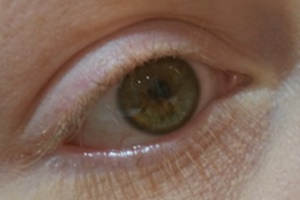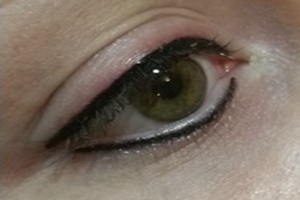Before & After
Just Drag The Handle
Permanent Makeup tattooed eyeliner can enhance the eye by creating an optical illusion using lines and color. The pinpoint accuracy of small tattoo needles allow precision not possible with eyeliner pencils…and it stays in place. There is no smudging, smearing or reapplying eyeliner on a daily basis. Tattooed eyeliner can look dramatic or subtle.
There are many Permanent Makeup tattooed eyeliner styles to choose from. The colors can be soft, bold, or bright. The tattooed eyeliner edges can be smudged, defined or softened. The line can be thin, medium or thick. The tail can extend beyond the eye or taper off at the end of the eye. You can use one color, or multiple colors. The upper eyelid color can be different than the bottom eyelid color. There are more choices than you can shake an eyeliner stick at.
Permanent Makeup eyeliner can make the eyes come alive on the face. Choosing the right eyeliner design can change the shape of the eye, and even make it look more youthful. What are the some of the eye shapes?
The 4 basic eye shapes are:
Eye 1- overly uplifted, (See canthus chart below) is sometimes deferred to as a “Cat” eye.
Eye 2 – slightly uplifted outer corner. Women with this type of slant can apply makeup in almost every style. This shape is youthful and gives an open expression.
Eye 3- downturned eye angle. This eye is usually genetic, or is a result of aging. The goal here is to help lift the eye with an illusion. Usually, a straight angle look is the best that can be achieved with makeup for the down turned eye.
Eye 4 – straight across eye (Eye in circle). Makeup should be applied in a way that does not drag the eye down into a negative looking tilt. The makeup goal is to lift the eye a little into an upward slant, or a upward contour.
Canthus Chart
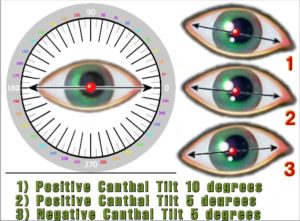
What are the do not’s of Permanent Makeup eyeliner. Thickness, length and color are client preferences, but a natural look will stand the test of time. These styles of eyeliners below in the thumbnail pictures will ultimately lead to regret and then removal.
Do not connect the upper and lower eyeliner at the inside corners of the eye. The top and bottom eyeliner should start at the first lash or tear duct. Tattooing inside the the corners of the eye will increase pigment migration and smearing risks.
Do not connect the upper and lower eyeliner at the outside corners of the eye. The lines will be close, but still need to be separate. The tissue in the inner and outer corners of the eye has a higher risk of migration and smearing. Connecting the lines closes the eye. As you age, facial gravity will bring down the corner but will have a more natural look. I can show you during a consultation the difference between both looks, and you will see the difference, or you can just look at the picture below and it explains everything.
Do not create long single tails or double tails on the outside corner of the eye. Do not go crazy with eyeliner tails. This is a fashion trend and can quickly become unfashionable. But more importantly, when the face ages, gravity will bring that tail downward. Remember you want a slightly uplifted eye, not a downturned eye. A tail that extends the upper eyeliner slightly is fine, and adds a bit of drama. It can also help open the eye. Try to keep things in moderation and you will have no regrets.
Do not over power the eye with overly thick eyeliner. This style of eyeliner is too heavy to be permanent and it closes the eye. This Egyptian fashion trend of the past was considered beautiful in the days of Cleopatra. Perhaps her exotic eyes helped win the hearts of her lovers, Marc Antony and Julius Caesar. I might be wrong, but I am willing to bet this eyeliner style will not be as lucky for you. Last, your idea of thick may not be the same as mine, so I created a, “line thickness chart.” We will refer to this chart when designing your tattooed eyeliner so there will be no surprises.
Examples of Do Not’s
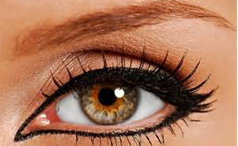
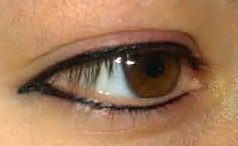
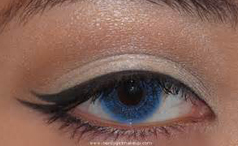
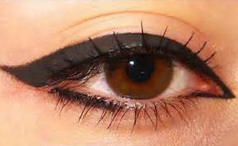
During our permanent makeup eyeliner consultation the following should be considered:
- Length of the liner
- Thickness of the liner
- Pigment color(s)
- Shape of the eye
- Eyeliner edge, defined, smoky, smoothed, smudged, or faded
